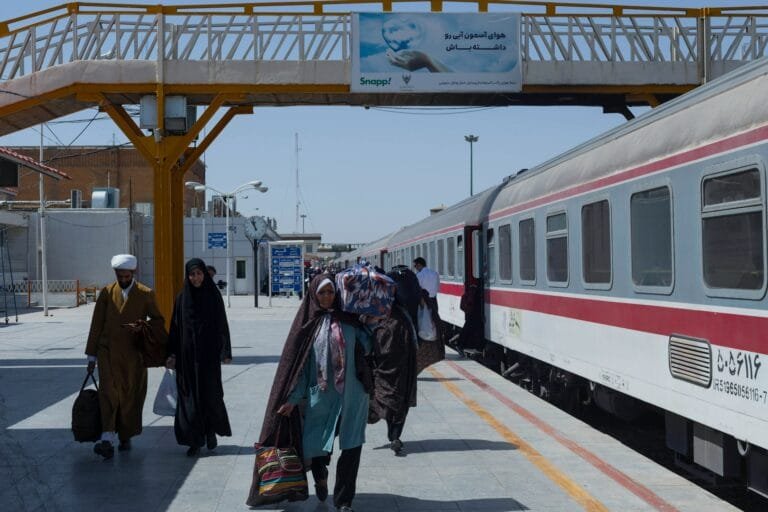Types of Trains
- Traditional long-distance trains that run not on high-speed rail yet, and mostly drive with diesel locomotives.
- Sleeper trains which are common for long routes like Tehran–Mashhad, Tehran–Bandar Abbas, and Tehran–Tabriz. There are 4-berth or 6-berth cabins and some seating coaches.
- Pardis DMU “high-speed” train that reaches 160–200 km/h on conventional tracks, serving the routes Tehran to Mashhad and Tehran to Isfahan.
Train categories by comfort:
- Luxury (5-star) Fadak with airline-style seats for maximum comfort.
- Deluxe Bon Rail, Simorgh and Sabz.
- Standard Raja, Safir which are economy sleeper or seating.
- Regional commuter trains that are limited, mainly around Tehran.
Railway Company
Islamic Republic of Iran Railways (IRIR/RAI) which is the State-owned railway company in Iran. It oversees all rail operations.
Major operators:
- Raja Passenger Train Company is the operator that handles most long-distance trains in Iran.
- Safir Rail Transportation runs various services including the Bon Rail and Joopar train services in Iran.
- Fadak Rail is the Luxury train operator of Iran. Their trains are the most comfortable and prestigious ones.
All trains are bookable through the national train booking system of Iran. No need to deal with each company separately.
Buying Tickets
Through the official website Raja.ir For Persian or foreign residents only, as it requires an Iranian bank card.
Best options for foreigners:
- Book through Iranian travel agencies like 1stQuest, Apochi, or OrientTrips/Surfiran. We could not find tickets on platforms like 12go or trip.com, which might be due to sanctions on Iran.
- Buy in person at major stations (e.g., Tehran Railway Station) which is always a gamble for high on demand routes, as they might be sold out.
- Hotel concierge services can help with reservations.
Important
- Iran uses a real-name booking system, so a Passport is required.
- Tickets sell out fast on popular routes (especially Tehran–Mashhad).
- E-tickets and printouts are both accepted. So take your ID for boarding.
Railway Map & Main Routes
Tehran is the central hub for trains in Iran. Most major lines radiate outward from the capital.
Main routes:
- Tehran → Mashhad (~12 hours).
- Tehran → Bandar Abbas (~20+ hours).
- Tehran → Tabriz (connects to Turkey).
- Tehran → Kerman → Zahedan (toward Pakistan).
- Tehran → Ahvaz → Khorramshahr (southwest to Iraq).
- Mashhad → Yazd → Bandar Abbas (north-south route).
Map
You can find the railway network map on the official website of the Iranian railway: Map
Tip: Ask at stations for printed maps or check Wikipedia for route diagrams.
Cleanliness
- Luxury and 4-berth sleepers are generally clean, well-maintained with fresh linens and up to a good standard.
- Luxury trains (Fadak, Zendegi) come with high standards, even provide slippers and amenities for their guests.
- Older Raja trains are functional but may show signs of age.
Toilets:
Mix of Western and squat-style toilets which are kept clean but can get wet or messy on long trips. Bring hand sanitizer and tissues just in case.
Train Speeds & Travel Time
Slow travelling trains average an speed of 60–100 km/h.
The fastest option: Pardis train goes ~150 km/h, and reduces Tehran–Mashhad to ~8 hours.
Example journey times:
- Tehran → Shiraz – ~15 hours.
- Tehran → Bandar Abbas – 20+ hours.
- Tehran → Mashhad – 11–12 hours.
Delays possible but usually within an hour.
Pro tip: Treat train travel as an experience and enjoy tea, chat with locals, and relax.





